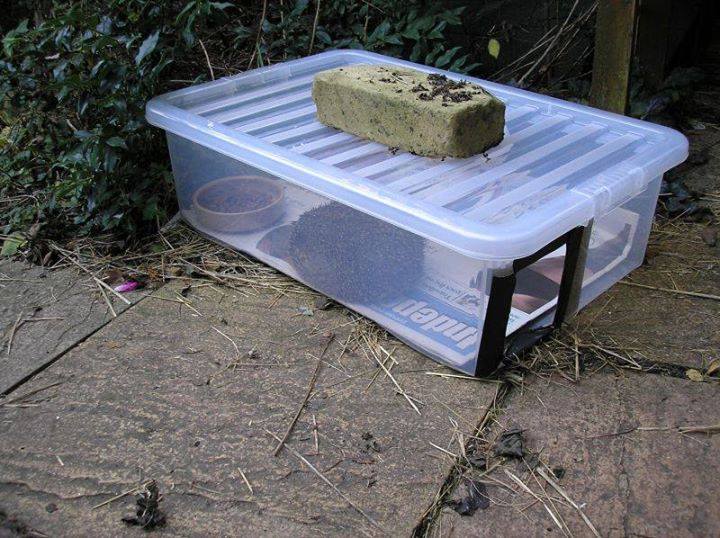
Looking for something to do with the kids during the summer holidays? Why not build a hedgehog cafe!
By feeding the hungry hogs in your garden, you’re helping them build the energy they need to raise their hoglets and gain fat stores for their long winter hibernation. With hedgehogs in the UK at risk of extinction, it’s vital that we give our spiky friends a safe place to eat and rest. One great way to do this is to build a feeding station in your garden with lots of hedgehog food and fresh water!
What you will need to build your hedgehog café:
Large plastic or wooden box
Hacksaw or strong scissors*
Strong, thick tape
2 bricks or large stones
Shallow dishes
Hedgehog Food
Water
Our simple step-by-step guide:
- Choose a quiet spot in your garden to place your cafe, ensuring the area is in relatively close proximity to your ‘hedgehog highway’ (a small hole cut into your fence which allows hedgehogs to come and go as they please).
- Carefully cut a 13cmx13cm/4.5’’x4.5’’ hole in one side of the box. This will be your hedgehog entrance point. You can also install a tunnel to prevent cats or foxes stealing the food.
- If using a plastic box, ensure that all sharp edges are covered with thick tape. This will ensure that the hedgehog will not be harmed by any sharp bits.
- Turn the box upside down and place your WildThings Hedgehog Food and water at the furthest point away from the hedgehog entrance.
- Place a brick or other heavy object on top of the plastic box to ensure that the box does not fall over or move and expose the hedgehog and its food. This will also stop foxes or cats from tipping the box up or dragging it away.
Now it’s time to spot your spiky visitor! Keep a close lookout as the sun goes down and you may just be rewarded with a hedgehog snuffling away at the delicious food in your café.
Eating enough before hibernation is very important and this is when supplementary feeding can prove vital for any hedgehog’s survival. So, there is no better time than the present to start building your hedgehog feeding station!
For more ideas on how you can help your local hedgehogs, follow us on social media.
*Please always be careful when using sharp objects. Children should seek assistance from a parent or guardian.






